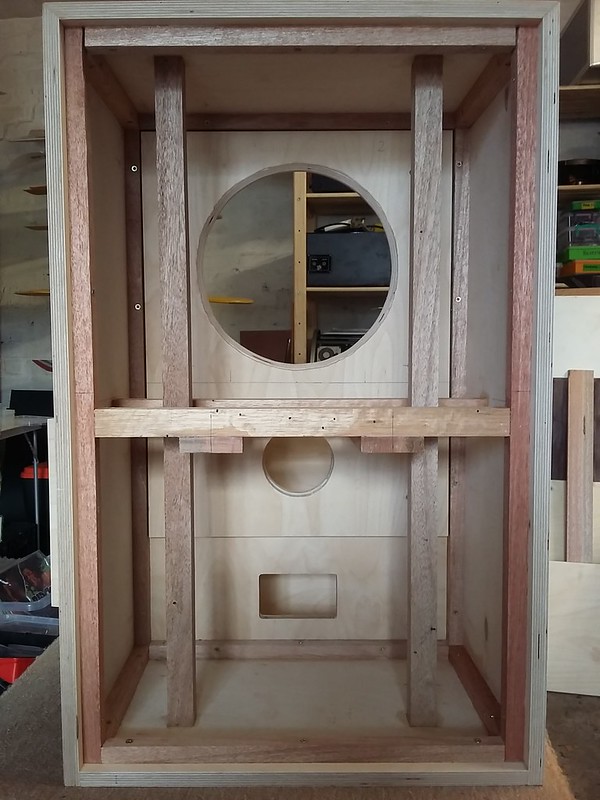Raoul Duke
pfm Member
Not wanting to reinvent the wheel but wondering what life my 12" HPD's could have beyond the Devon's they are in at present.. I set about knocking up some 125litre BR boxes. These are golden ratio and should be tuned to about 40Hz.
Must get the camera out for some better shots but this is where I'm at now.
 HPD315 Box Build by Bregtje Cals, on Flickr
HPD315 Box Build by Bregtje Cals, on Flickr
A friend did the mitres for me and everything is going together quite well so far despite my limited woodworking skills. All 18mm baltic birch ply and the front baffle is mostly a double layer as can be seen.
I am still trying to decide if I should add more bracing.. I am tempted to leave them as is and add bitumen sheets and foam felt and see where I'm at. I know the Tannoy cabs from this era were not huge on bracing and used a lot of chipboard in construction so feel like I'll come out ahead of those with a bit of luck! Still any tips would be great at this stage
Must get the camera out for some better shots but this is where I'm at now.
 HPD315 Box Build by Bregtje Cals, on Flickr
HPD315 Box Build by Bregtje Cals, on FlickrA friend did the mitres for me and everything is going together quite well so far despite my limited woodworking skills. All 18mm baltic birch ply and the front baffle is mostly a double layer as can be seen.
I am still trying to decide if I should add more bracing.. I am tempted to leave them as is and add bitumen sheets and foam felt and see where I'm at. I know the Tannoy cabs from this era were not huge on bracing and used a lot of chipboard in construction so feel like I'll come out ahead of those with a bit of luck! Still any tips would be great at this stage









